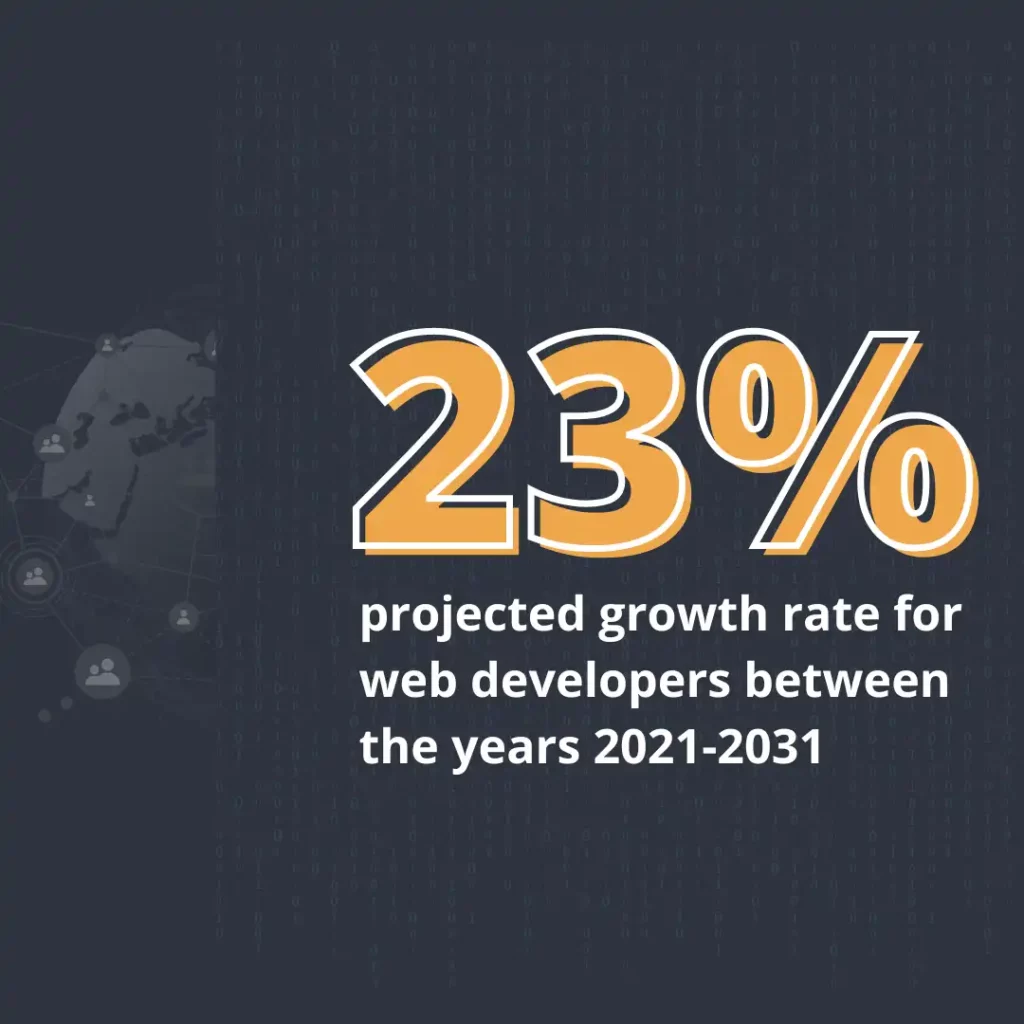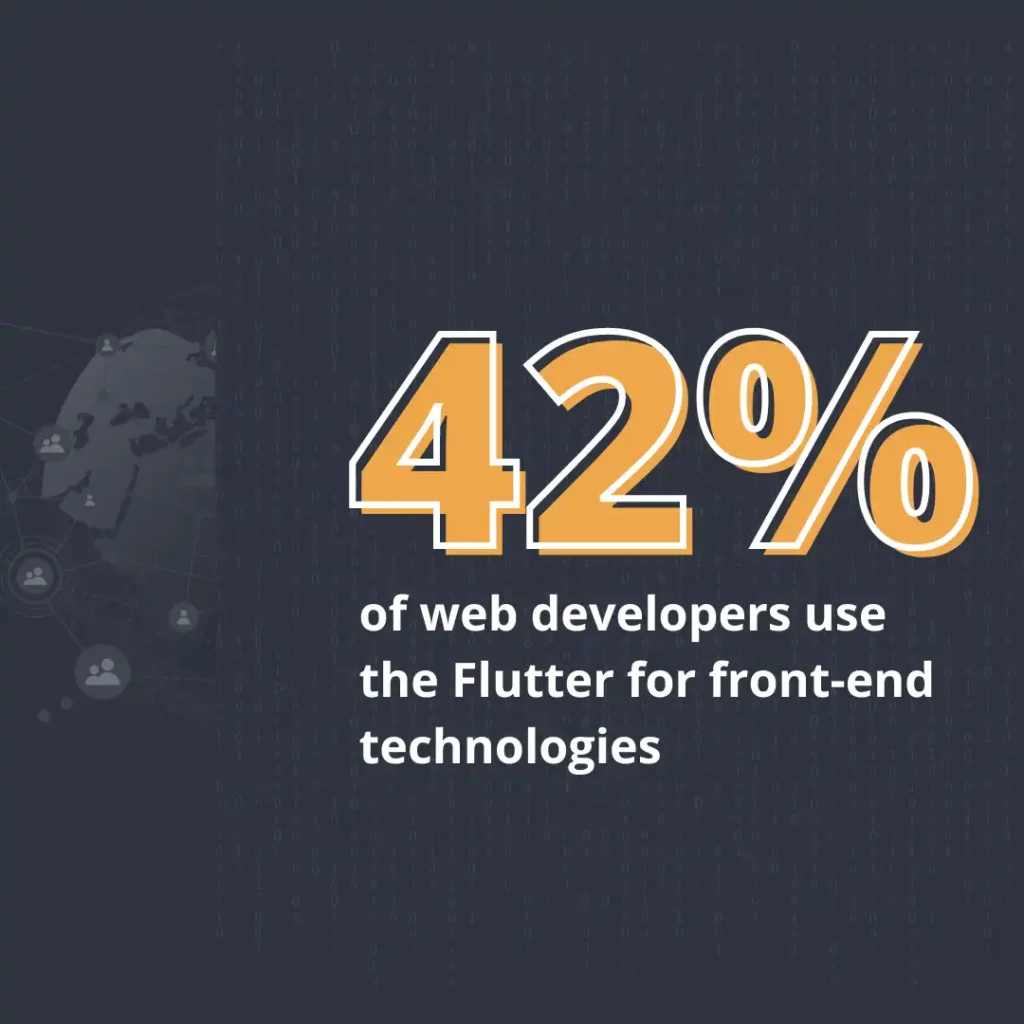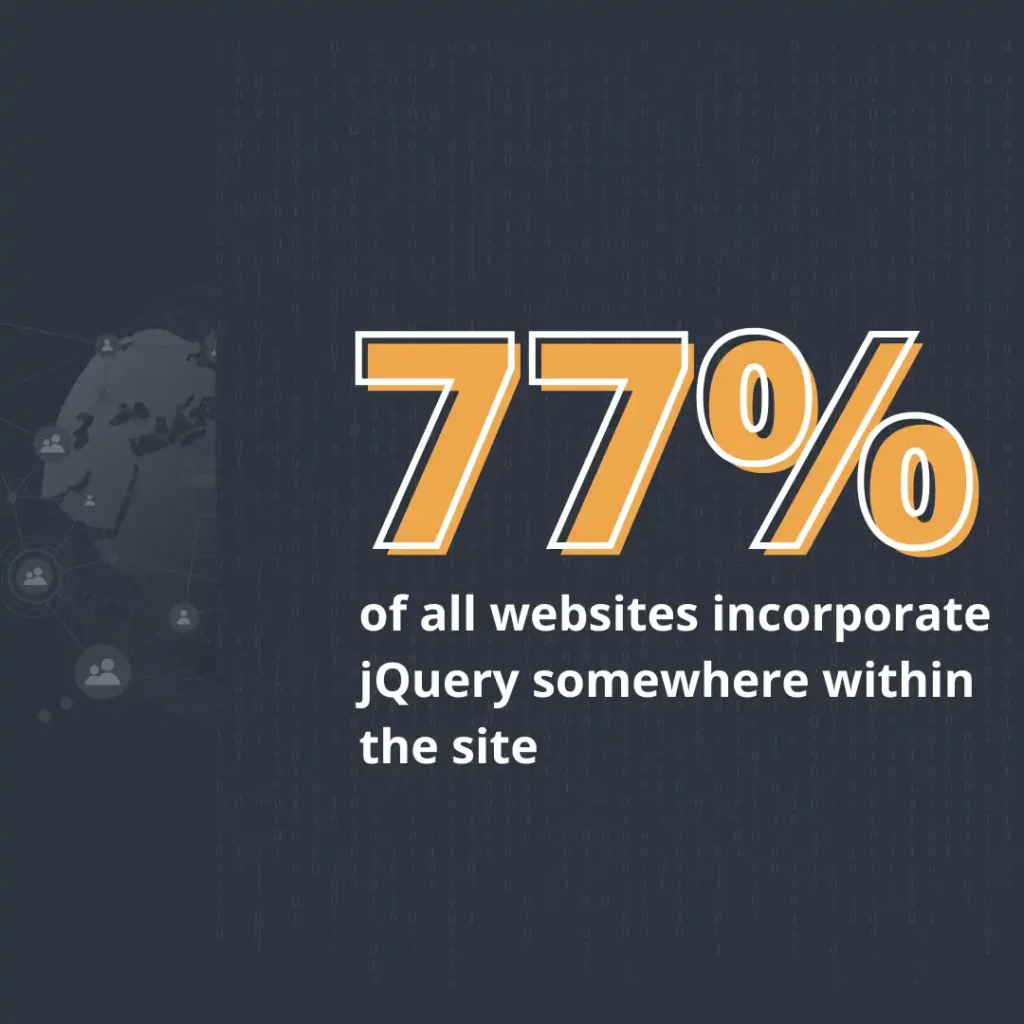Front-end technologies to watch out for in 2024. We have a list!
Successful software and web development can be engineered with the help of robust front-end technologies. It is essential for programmers and web developers to know the various options available and pick what works best for them. We will explore the top picks for the best front-end technologies in this article. In this article, we’ve partnered with our Front-End Web Designer to share the top picks within this best front-end technologies list. Keep reading!
Overview
- Delve into an in-depth exploration of the leading front-end technologies shaping the landscape.
- Uncover effective methods that strike a balance between innovation and reliability when making your technology decisions.
- Identify critical factors to assist you in picking the right front-end solution tailored to meet the specific demands of your projects or company.
Web development is growing
The popularity and usage of software solutions has grown in the last decade. It is fairly common to implement the use of these solutions in businesses across industries. A simple fact is that front-end technologies contribute towards making software solutions successful. Of course, backend technologies are also crucial. However, the front-end is the main output that users see and notice initially, and first impressions matter.
You want a website that converts well. But that only happens if it’s built and designed right.
Did you know that employment for web developers and digital designers has a projected growth rate of 23%? This is for the decade 2021 – 2031. It is phenomenal in comparison with the average growth rate of all occupations which is 5%.

Choosing a front-end technology can often be challenging because there are so many options available. Here is a list of the top 10 front-end technologies you should know in 2024 and beyond.
A list of the best 10 front-end technologies
Any company that wants to improve user interaction, productivity, website or app aesthetics should consider adopting front-end technologies. Given the existing landscape of technologies, many front-end technologies for the web stand out.
The top 10 front-end technologies listed below are predicted to rule the market in the coming years. Our Front-End Web Designer, Jeremy Cavender, shares his insight and experience with a few of these technologies.
1. AngularJS
AngularJS is the MEAN (MongoDB, Express.js, Angular, And Node.js) technology stack that includes the TypeScript-based web app framework. It uses the MVVM design pattern to separate the graphical user interface and business logic layers. It contains built-in templates that make it easier for developers to create user interface views quickly.
Data binding is quick and straightforward with AngularJS, requiring minimal developer involvement. It provides speedier loading times and more straightforward navigation, improving the overall user experience .
You can hire Angular developers as they may control the DOM using a two-way binding capability, which helps them save a ton of time. Because it provides caching, the CPU is under less performance demand.
2. ReactJS
A popular front-end JavaScript package, ReactJS builds user interfaces and connected components. It uses the MVC architecture, separating the data and presentation layers.
Jeremy explains, “ReactJS is a newer library. It has undeniably become a dominant presence on the internet, particularly with web apps.”
The XML and HTML documents act like a tree structure when the DOM is used, and each HTML component acts as an object.
When writing code for React, HTML, and tag syntax are mixed to create the component structures. It separates the more significant elements into smaller ones that can be handled independently and separately. “It is fast and simple, allowing the user to build web pages and apps similar to how a person would assemble Lego bricks,” Jeremy adds. With this capability, developers’ total productivity is sure to rise.
3. Vue.js
The MVVM framework Vue.js is modern, progressive, and ideally utilizes incremental adoption. Vue.js, one of the top JavaScript frameworks, has produced interactive UI elements that are lightweight and simple to modify.
It offers data-reactive aspects with an open and straightforward API. It is simple to complete minor projects and then scale up to more demanding tasks.
Due to its small size, Vue.js can be easily downloaded and set up. It provides thorough documentation and makes it easier to bind existing apps. Developing small- and large-scale templates is possible, and errors are simple to identify, saving time and effort.
4. Bootstrap
This free CSS framework called Bootstrap is designed to help developers build front-end programs that are mobile-first and responsive. It includes design templates for forms, navigation, buttons, typography, etc.
The front-end components of responsive sites can be quickly created using something akin to a toolkit. Its pre-built components offer a variety of icons and themes that support the development of creative ideas. Its design is responsive to both web development and mobile devices.
Jeremy shares what aspect he most appreciates, “Bootstrap has consistently served as a great way to quickly prototype web layouts. It allows the user to assess if a web structure will work or not. Any developer, regardless of their level of expertise, can easily prototype with Bootstrap without worrying about having to build styling from scratch.”
An HTML, CSS, and JS package, Bootstrap, seeks to make creating web pages more accessible. Bootstrap is simple because developers only require a fundamental understanding of HTML, CSS, and JS.
5. Flutter
Popular open-source UI framework, Flutter uses a single codebase to build adaptable cross-platform apps that look natural. It is one of the front-end frameworks for versatile and powerful designs. It is developing quickly. Flutter is used by 42% of web developers.

Due to its capacity to produce expressive and natively performing components on Android and iOS platforms, it is becoming increasingly popular.
The Flutter and Dart combo makes it simple for programmers to design applications quickly. The Stateful Hot Reload feature of Flutter demonstrates complete customization, native-like performance, and the capability to design graphic user interfaces.
6. jQuery
jQuery is one of the oldest and most well-known frameworks in the world wide web. It is used by 77.7% of all websites. One of the best front-end JavaScript framework libraries, it is quick, compact, and packed with capabilities. It aims to simplify client-side HTML scripting because it is a cross-platform framework.

With an API that functions in various web browsers, jQuery simplifies tasks like page traversal, event handling, Ajax, animation, and manipulation. jQuery’s extensibility and versatility have entirely changed how designers create JavaScript.
7. Meteor
Meteor is a NodeJS-based, open-source, free JavaScript framework. It has established itself as the best, most user-friendly method for creating cross-platform code since its launch in 2011.
Meteor is a fantastic tool for developing reliable, fast real-time web apps and managing everything from a browser app to a database.
8. Backbone.js
Backbone.js is one of the more well-known JavaScript frameworks, giving models customizable events and significant key-value binding to provide web applications with adequate structure.
It can communicate with the existing API via a RESTful JSON user interface. It is lightweight because it only utilizes two JS libraries. You can find libraries of enhanced APIs, such as views, declarative event handling, and functions.
9. Foundation
Another effective front-end framework is Zurb’s Foundation, which was created to help developers swiftly prototype and develop websites. It includes all the functionality needed to create contemporary online applications, CSS and HTML elements, SaaS variables, and JavaScript plugins.
Unlike other frameworks, Foundation prioritizes prototyping above writing functional code. This allows the team to quickly go from a design to a working prototype without spending time coding.
10. Grunt
Grunt is a JavaScript task runner that automates various jobs like compilation, unit testing, linting, and minification. Custom tasks defined in a Grunt file are carried out via the command-line interface. Several bundled plugins are available with Grunt, and they can all be automated with minimal work.
Web developers can add, edit, and expand custom tasks using Grunt’s highly flexible nature to suit their needs.
Conclusion
Making the right choice when it comes to front-end technologies is important. Follow this guide and the insight from our Front-End Web designer to make the right choice for your business and needs.
There are numerous factors that contribute to picking one over others. These factors may impact front-end development include personal preferences, project deadlines, budgets, volume, market timings, flexibility, future-proofing, productivity, and mobile compatibility.
There are several front-end technologies, and the list keeps growing. However, we believe that the ones we mentioned will effectively run the show now and in the coming years!
You know what else is important when it comes to websites? Securing your website.
Anna Reeve, MBA


